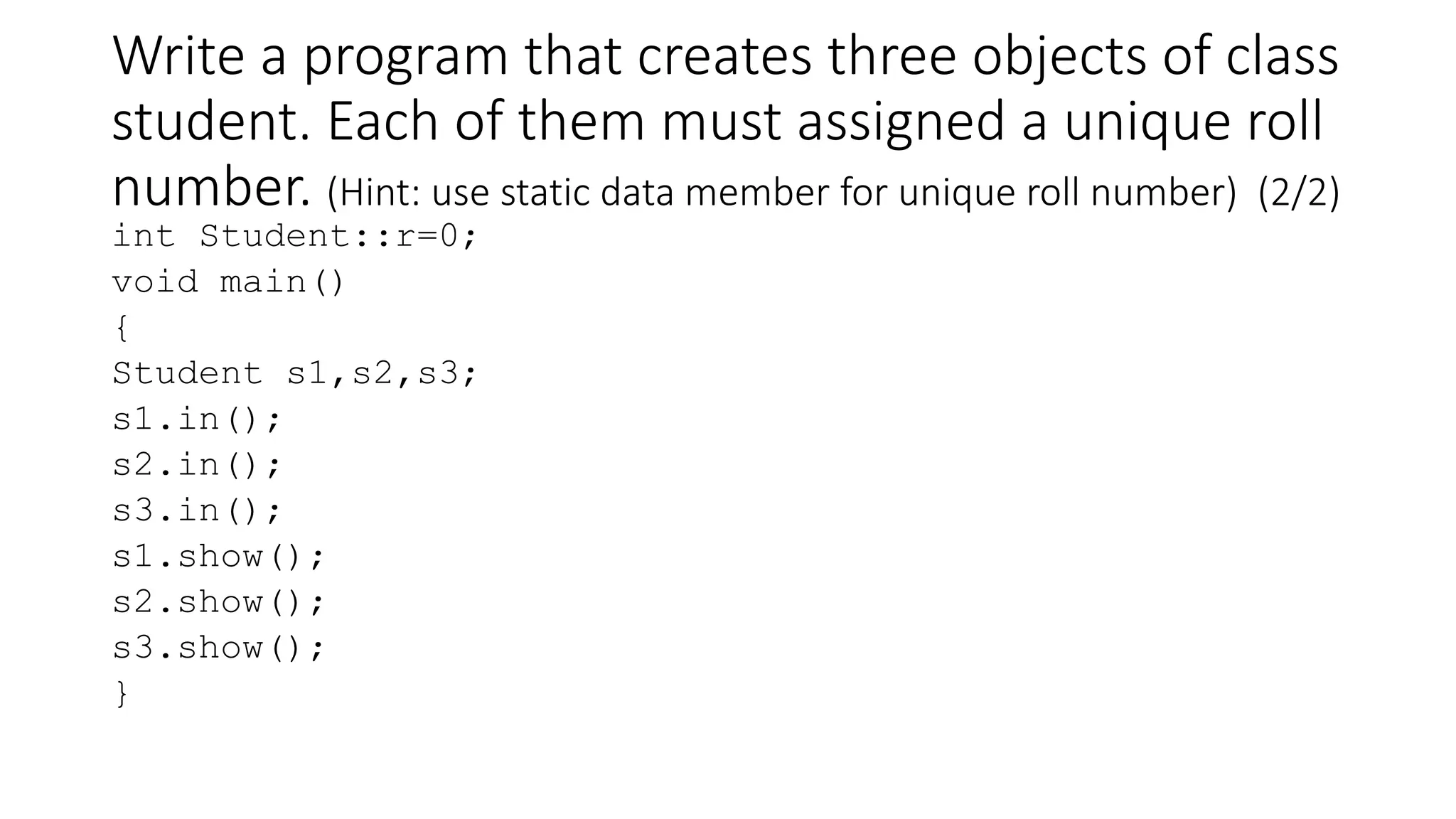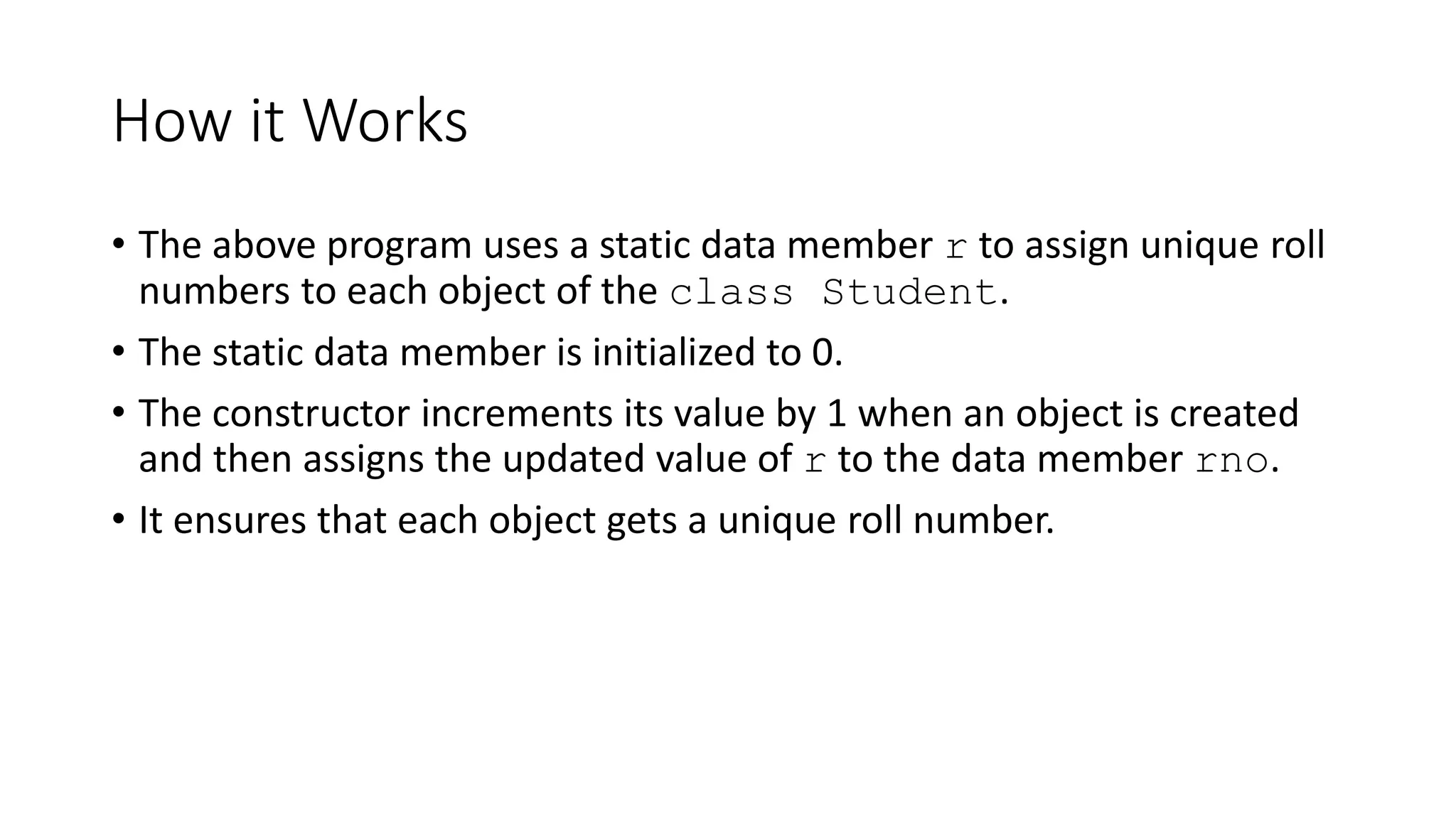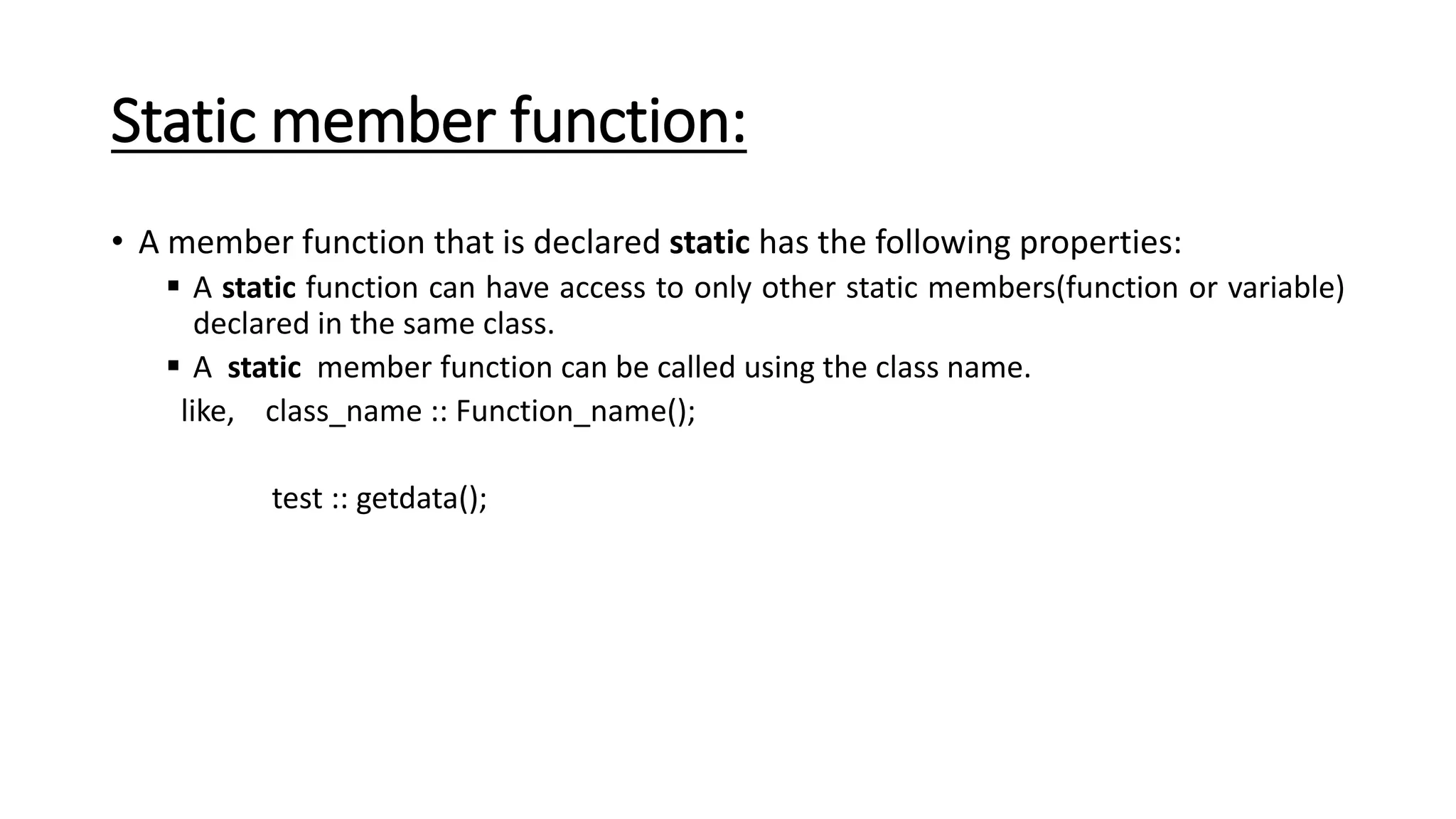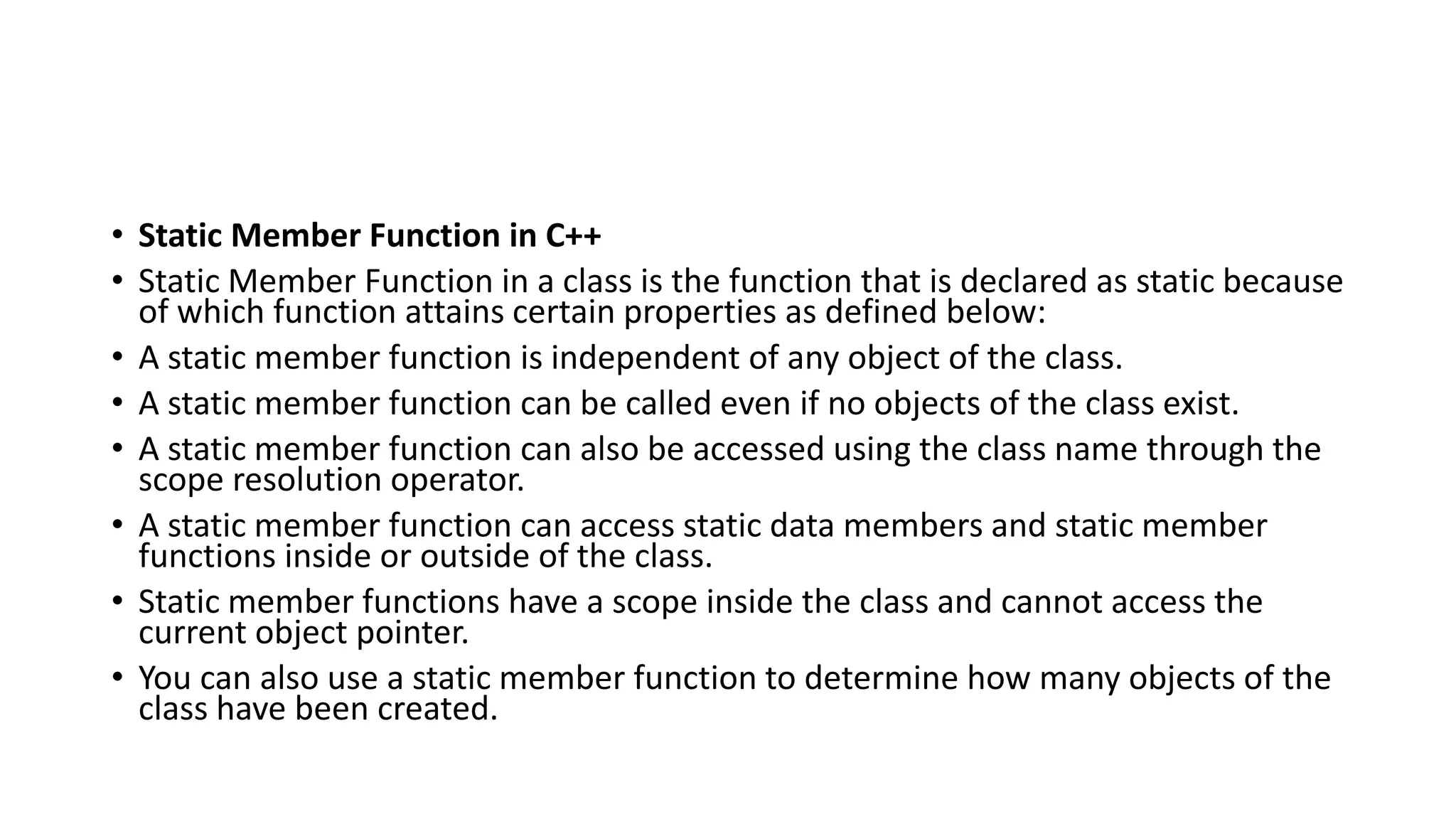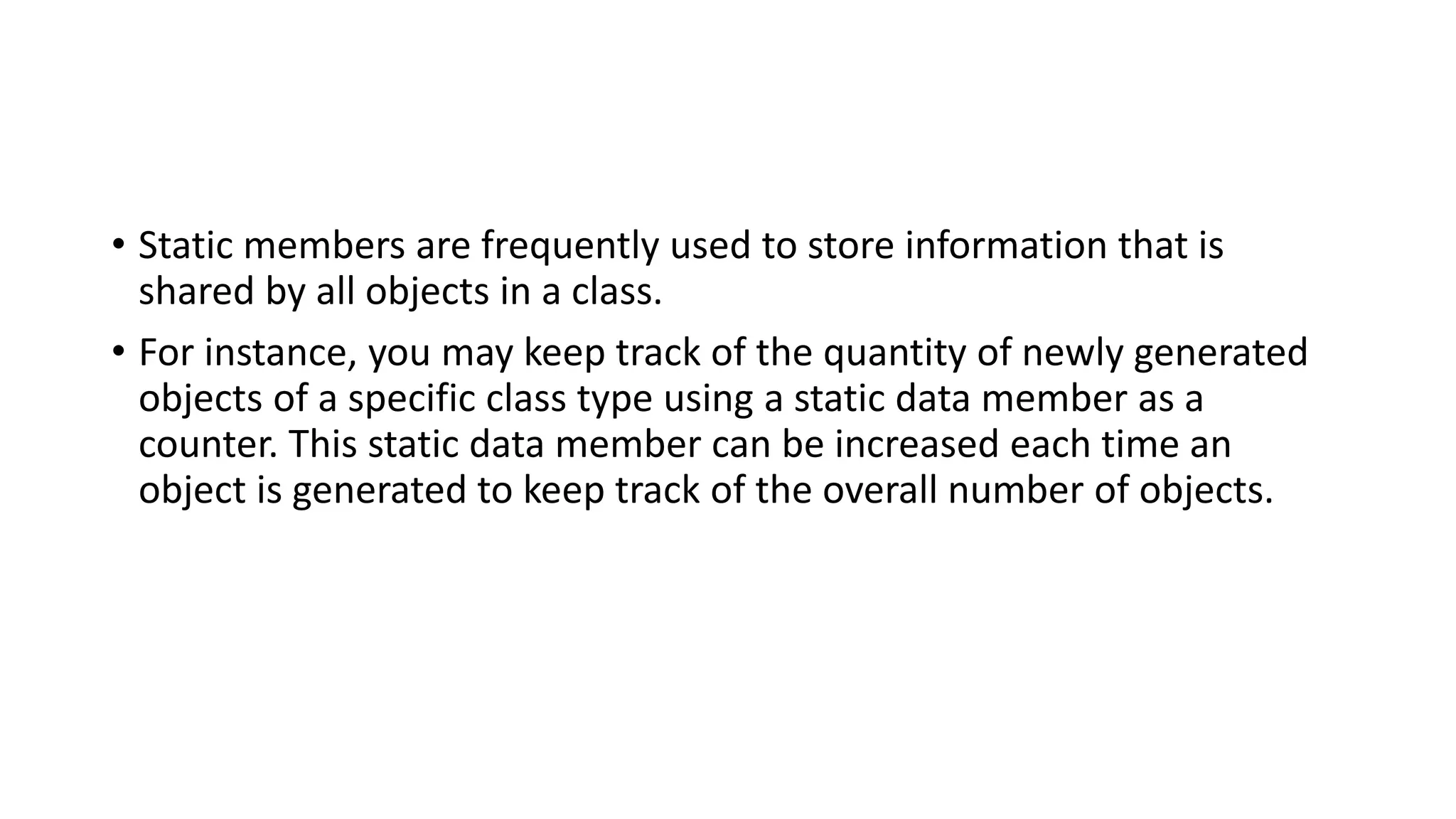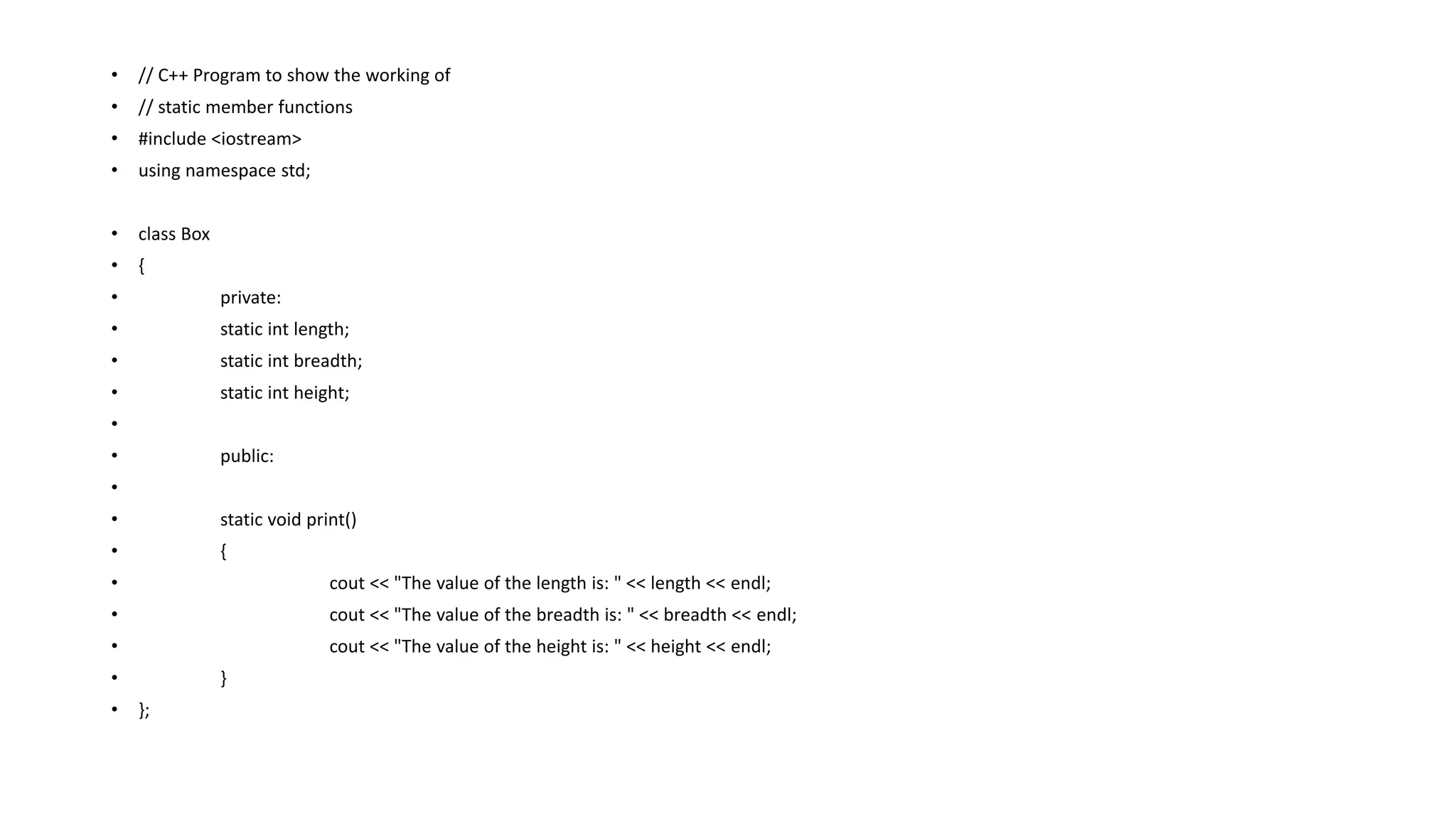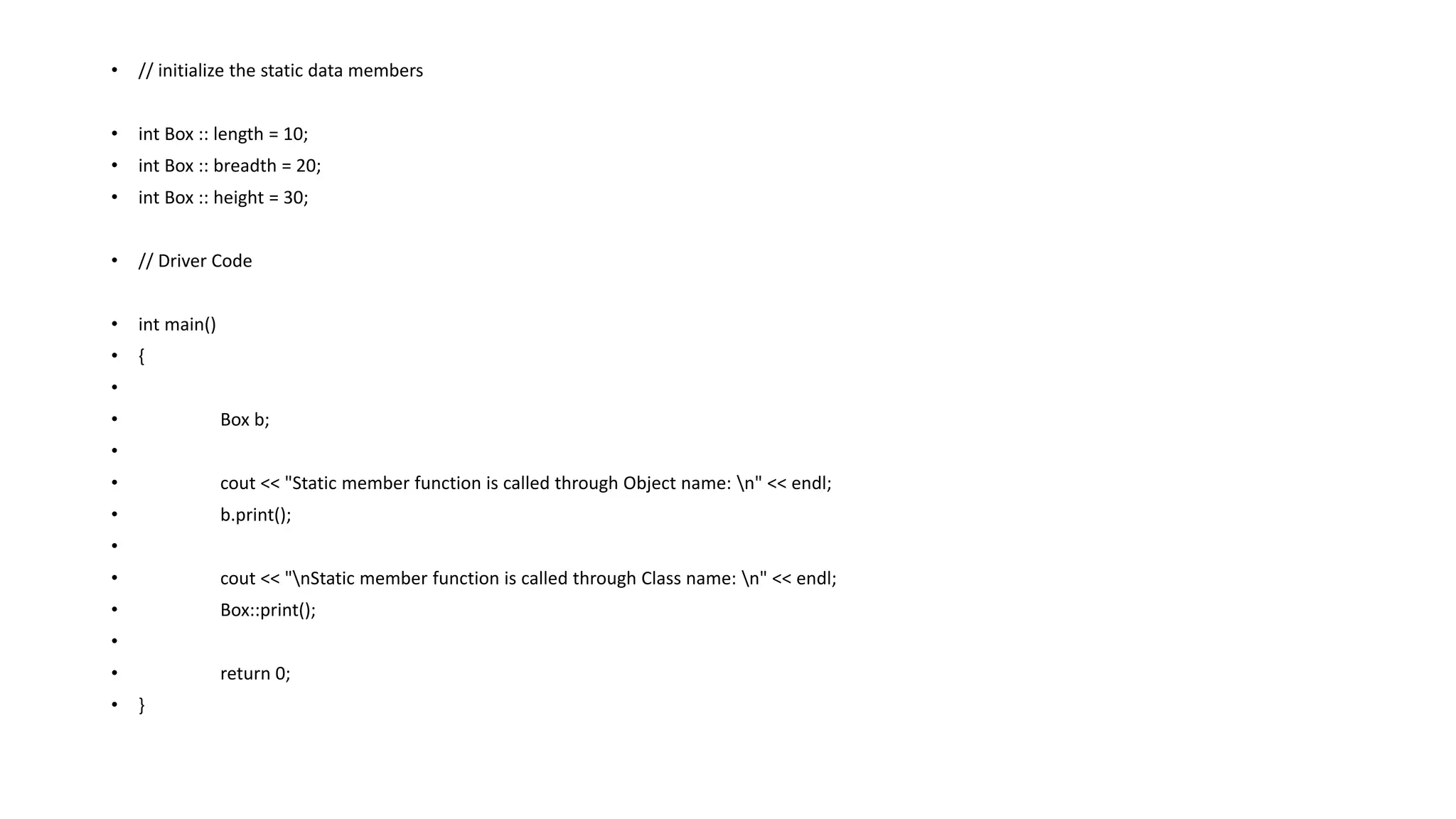The document explains static data members in C++, which are shared among all objects of a class and require a separate declaration and definition. It highlights their use in tracking shared information, such as counting the number of objects created. Various examples illustrate the implementation of static members, including counting objects and assigning unique roll numbers using static data members.
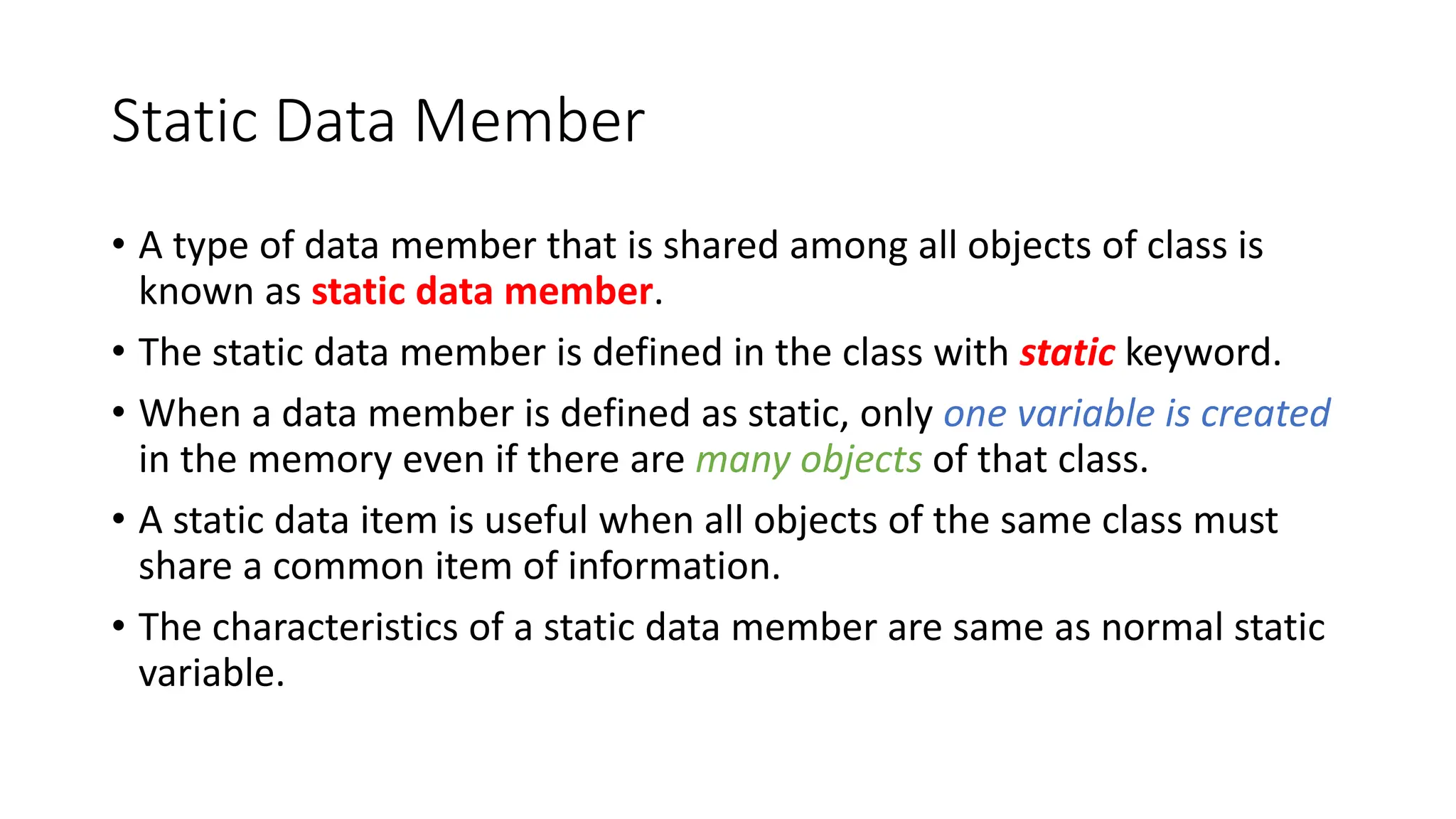
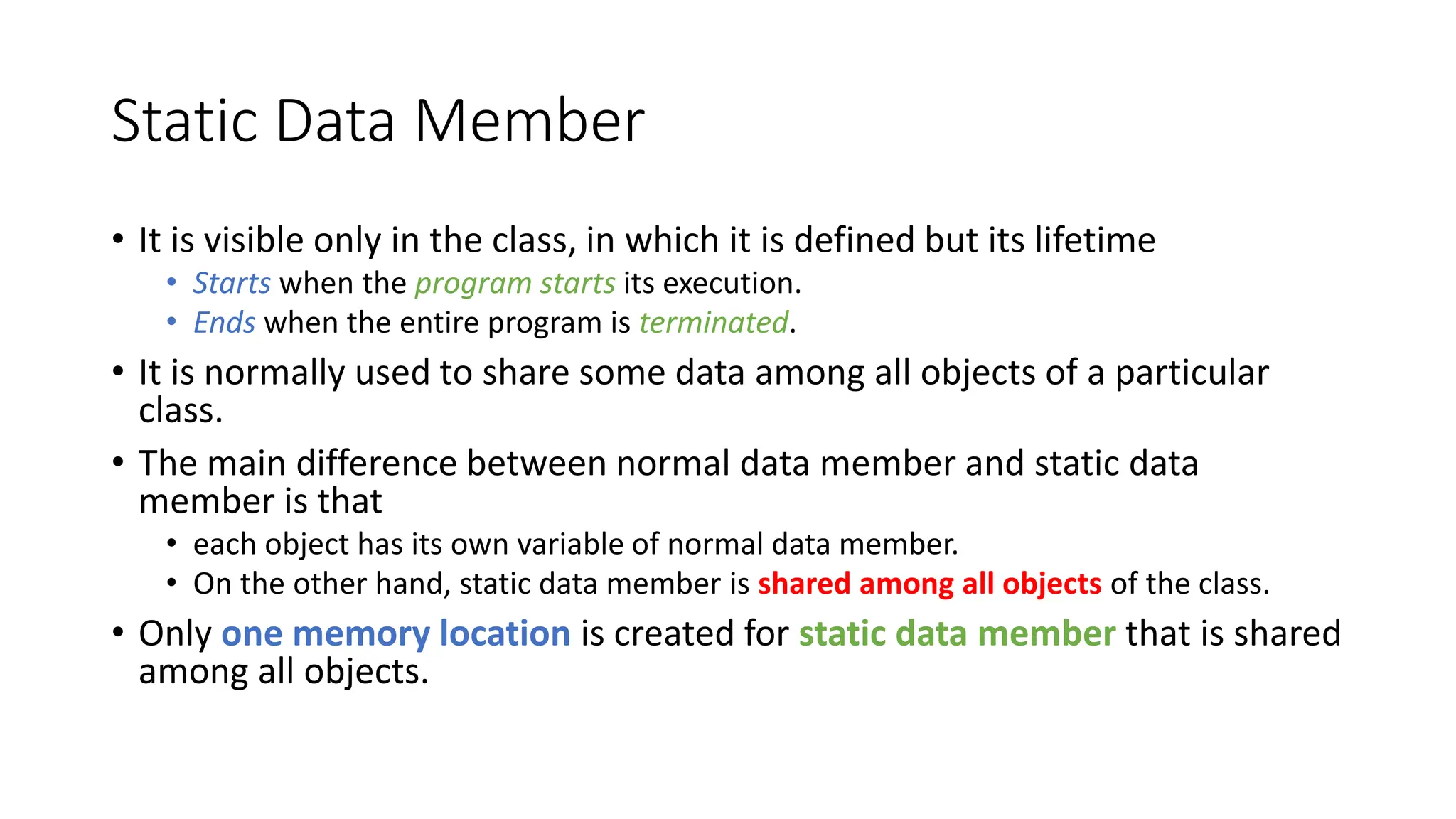
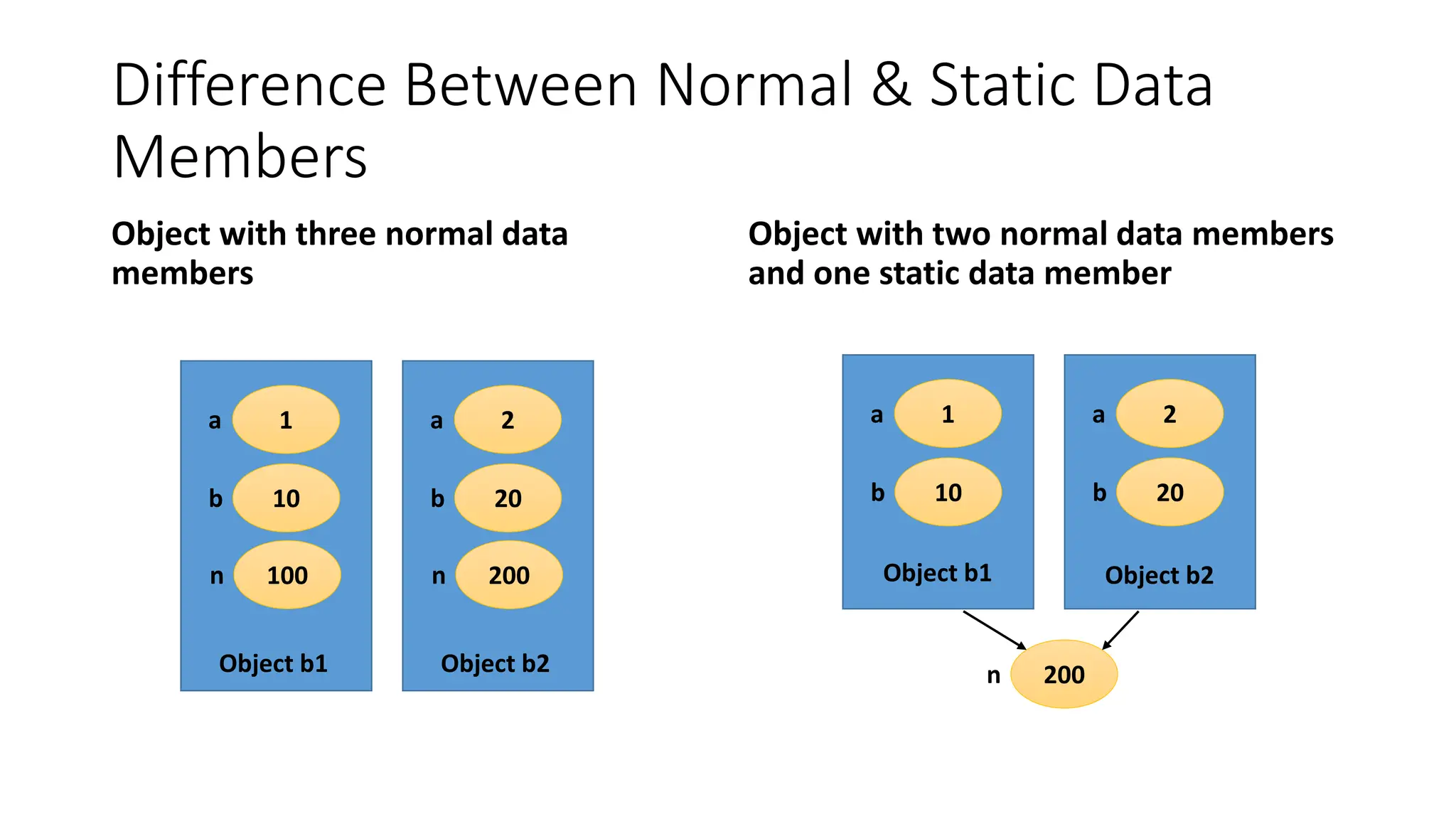
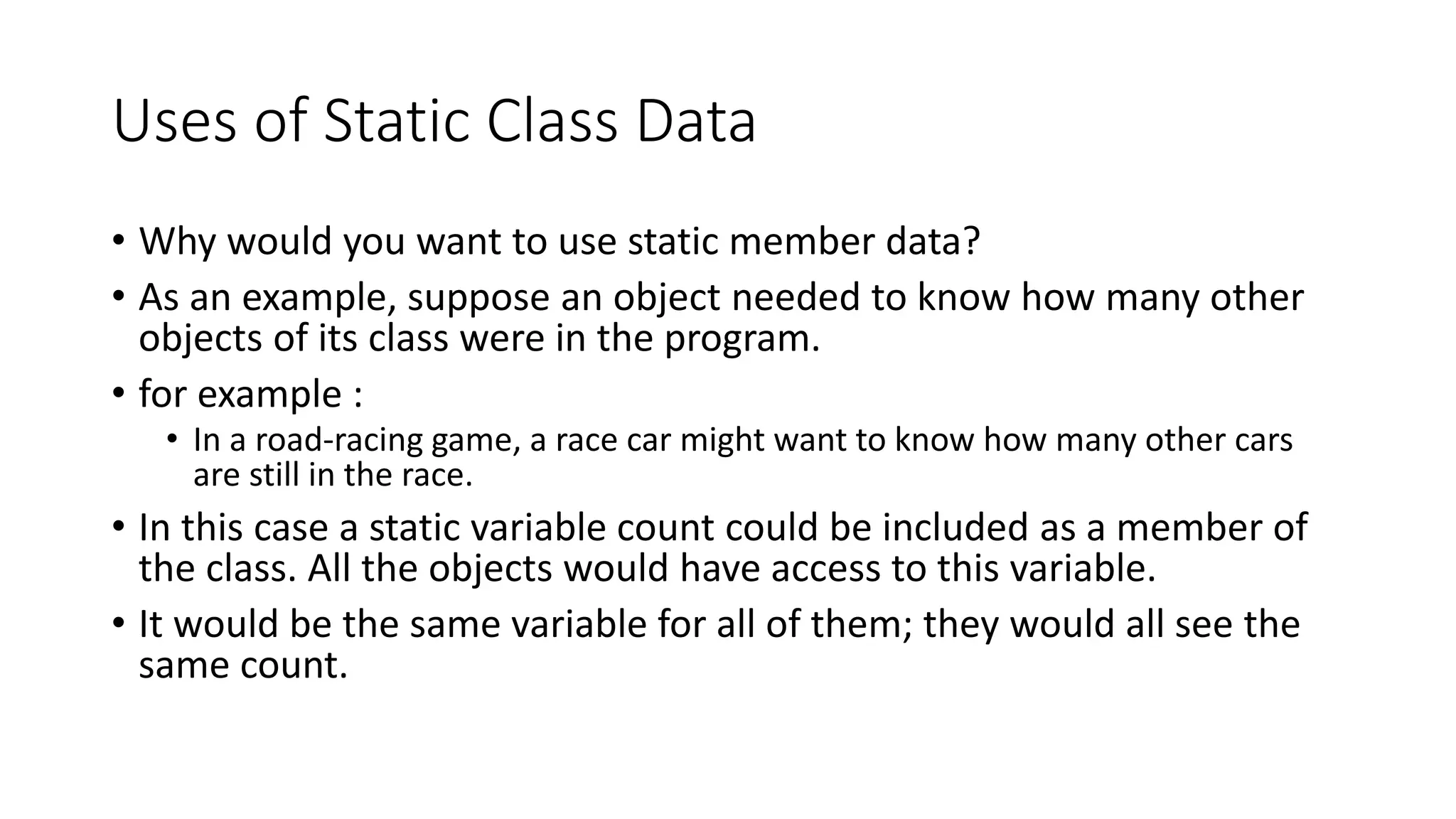
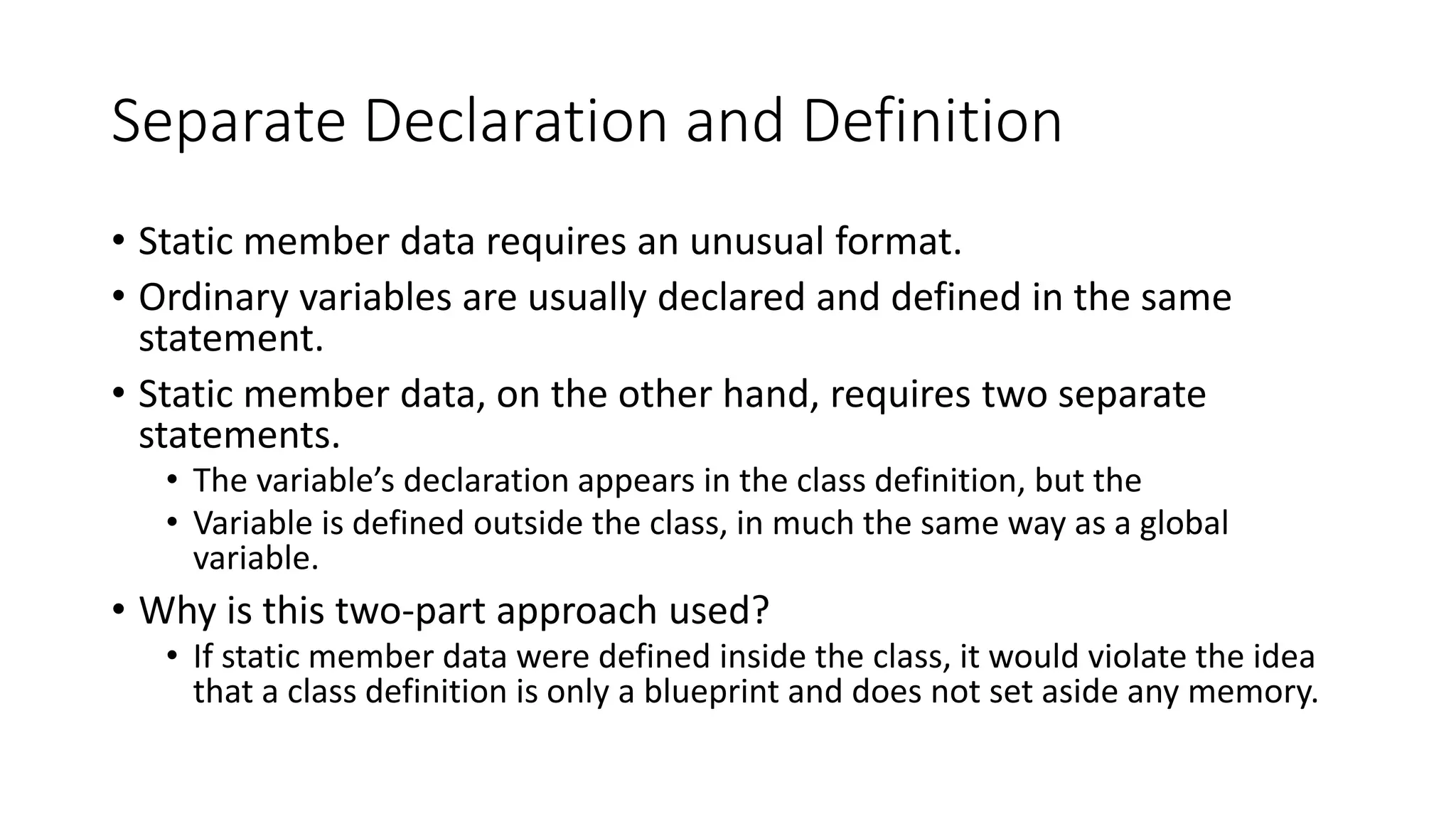
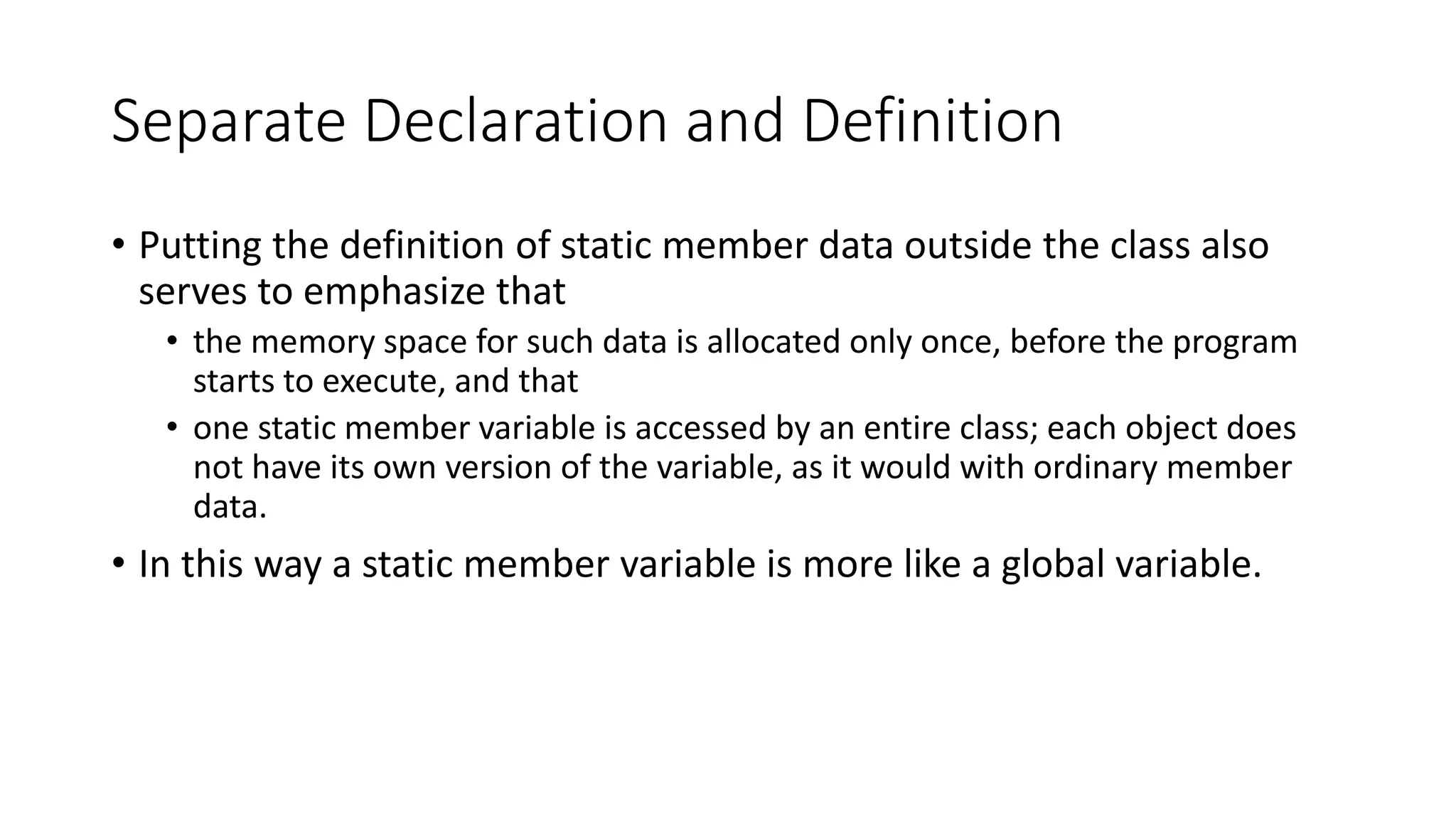
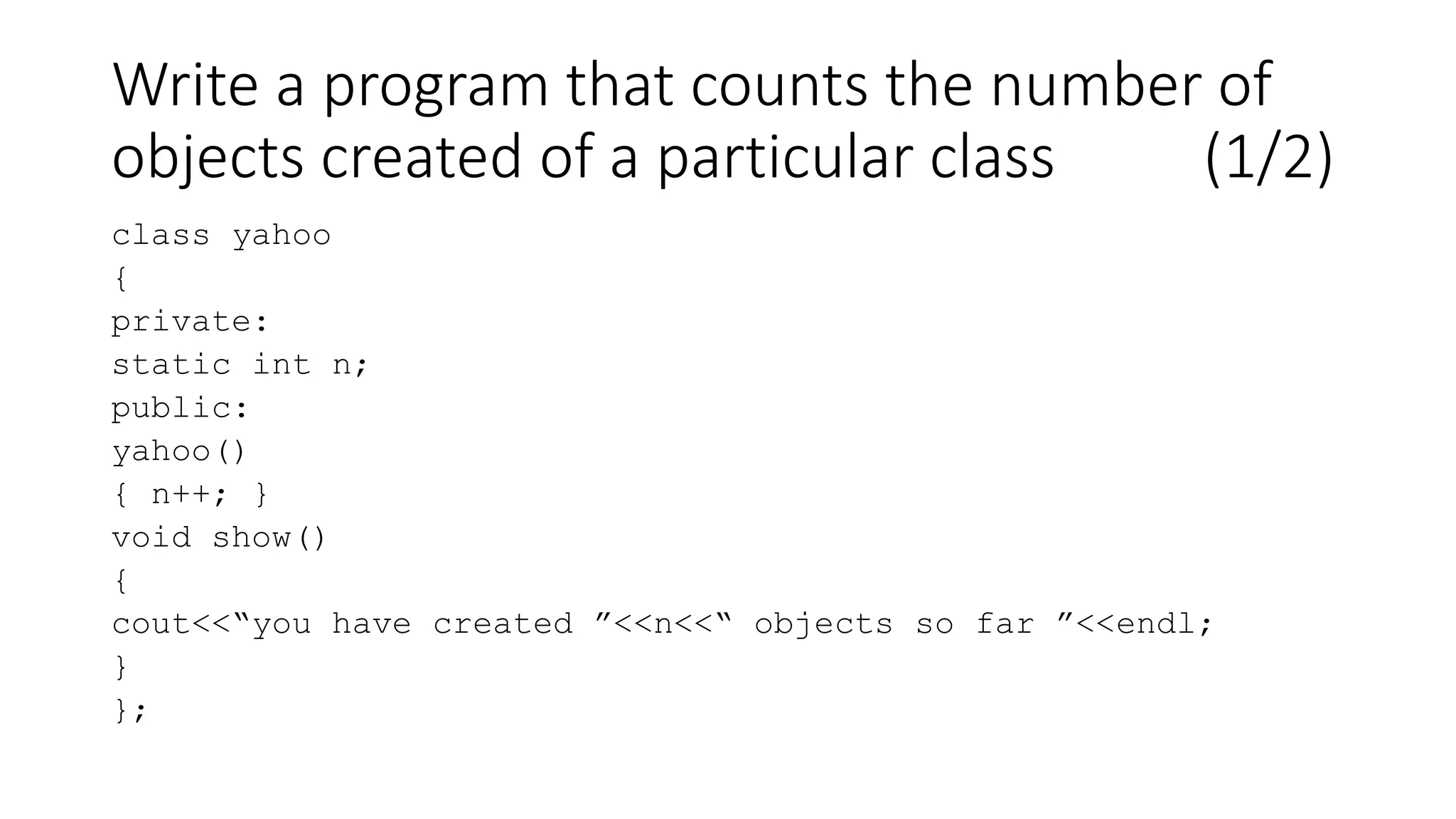
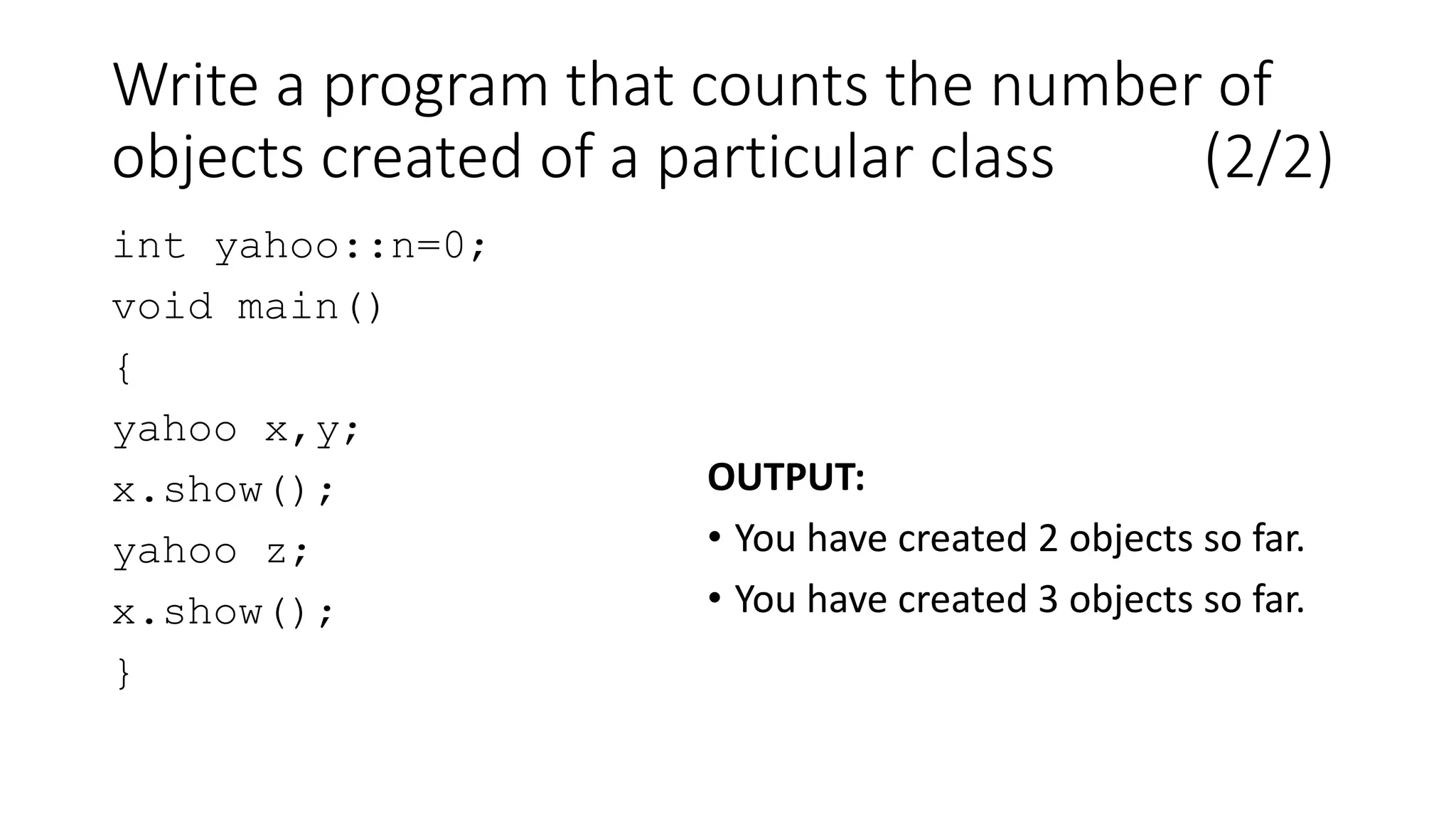
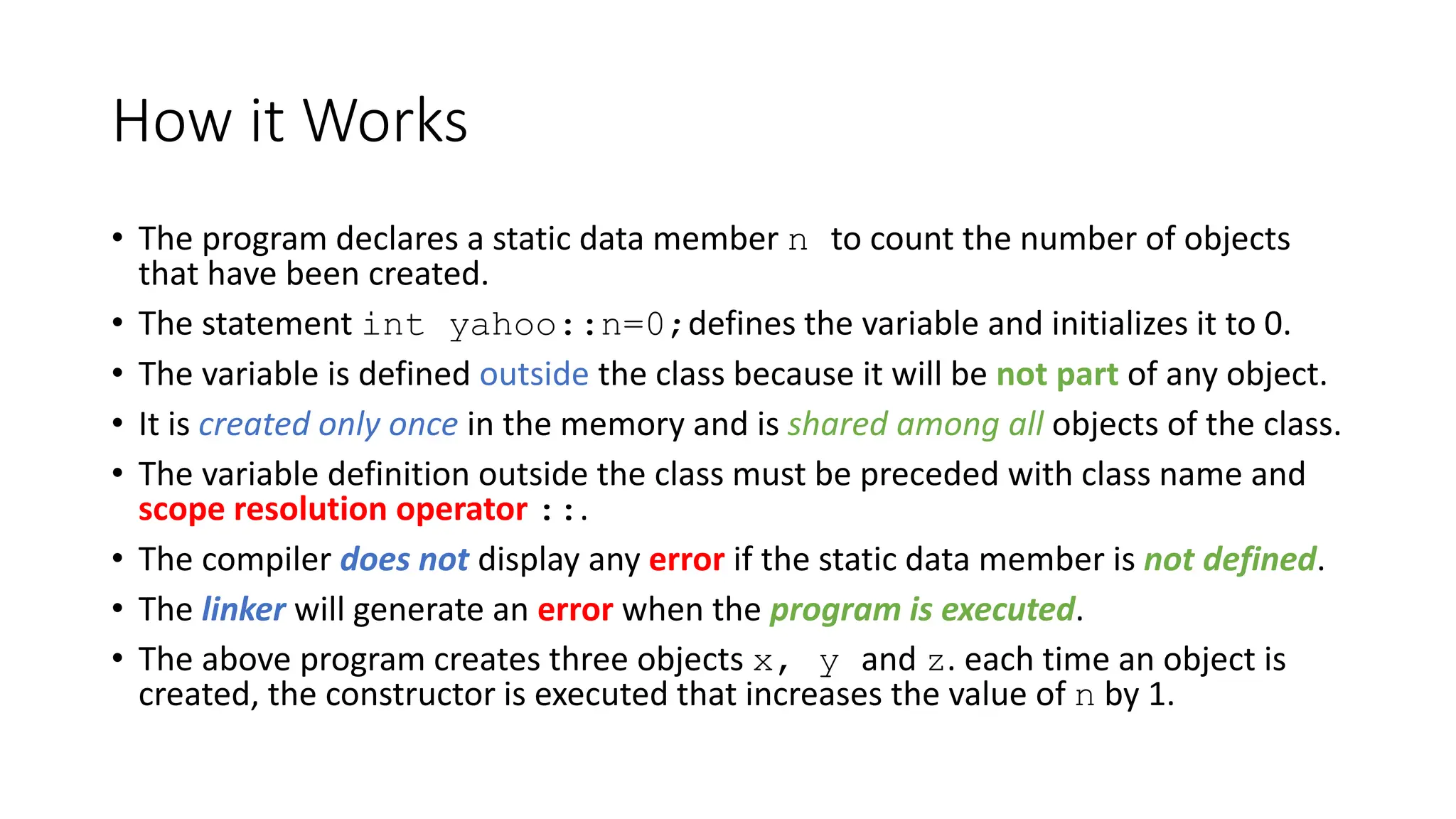
![Write a program that creates three objects of class
student. Each of them must assigned a unique roll
number. (Hint: use static data member for unique roll number) (1/2)
class Student
{
private:
static int r;
int rno,marks;
char name[30];
public:
Student()
{ r++;
Rno =r; }
void in()
{
cout<<“enter name:”;
gets(name);
cout<<“enter marks:”;
cin>>marks;
}
void show()
{
cout<<“Roll No:”<<rno<<endl;
cout<<“Name:”<<name<<endl;
cout<<“Marks:”<<marks<<endl;
}
};](https://image.slidesharecdn.com/static-240422030845-adb66eb2/75/static-members-in-object-oriented-program-pptx-10-2048.jpg)
